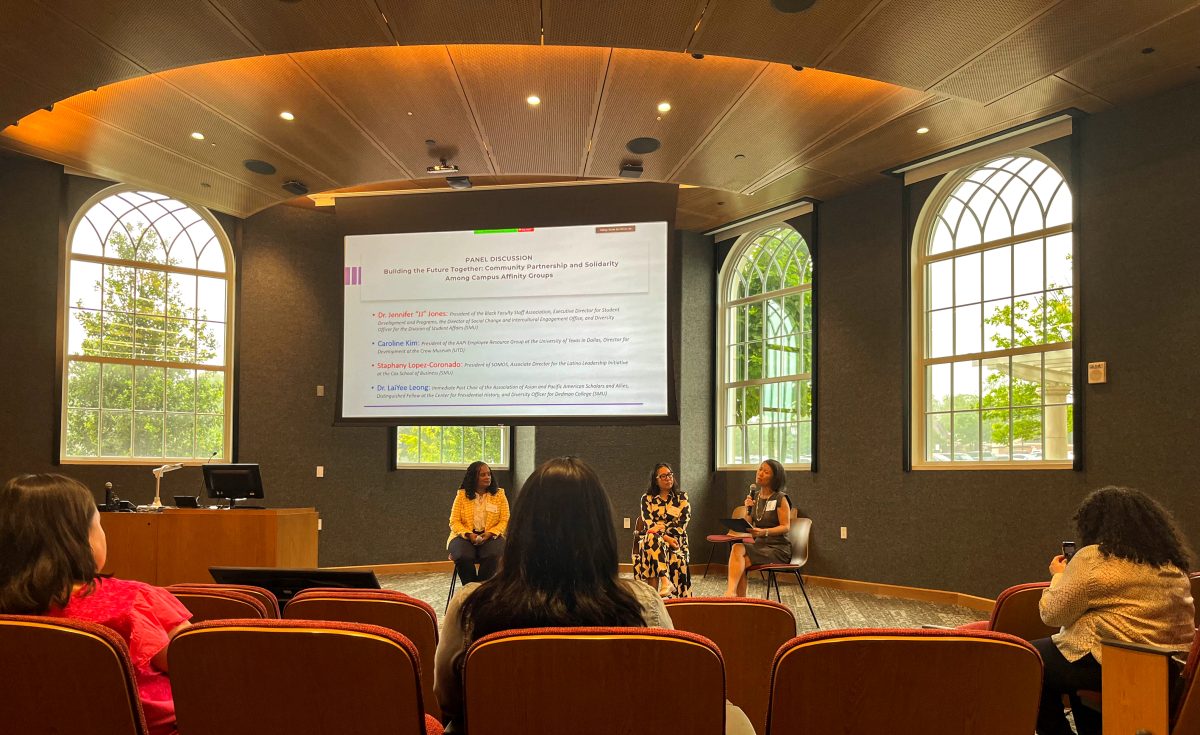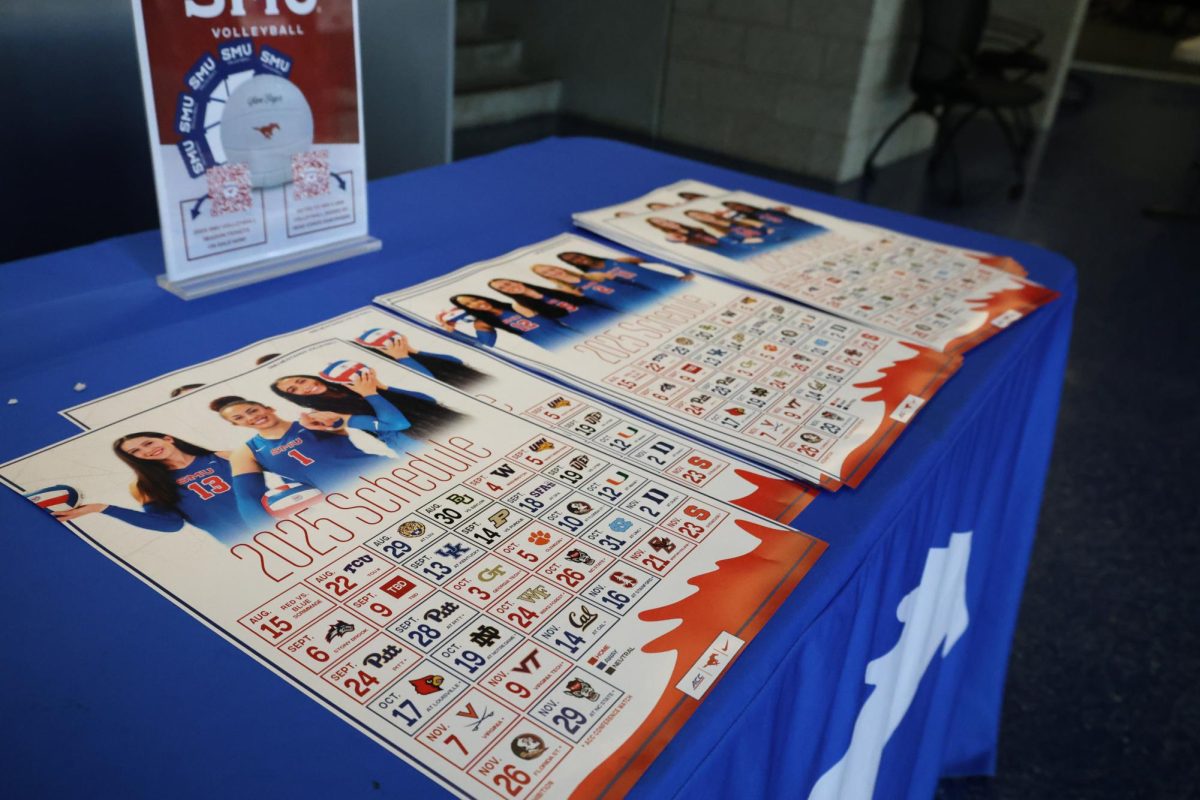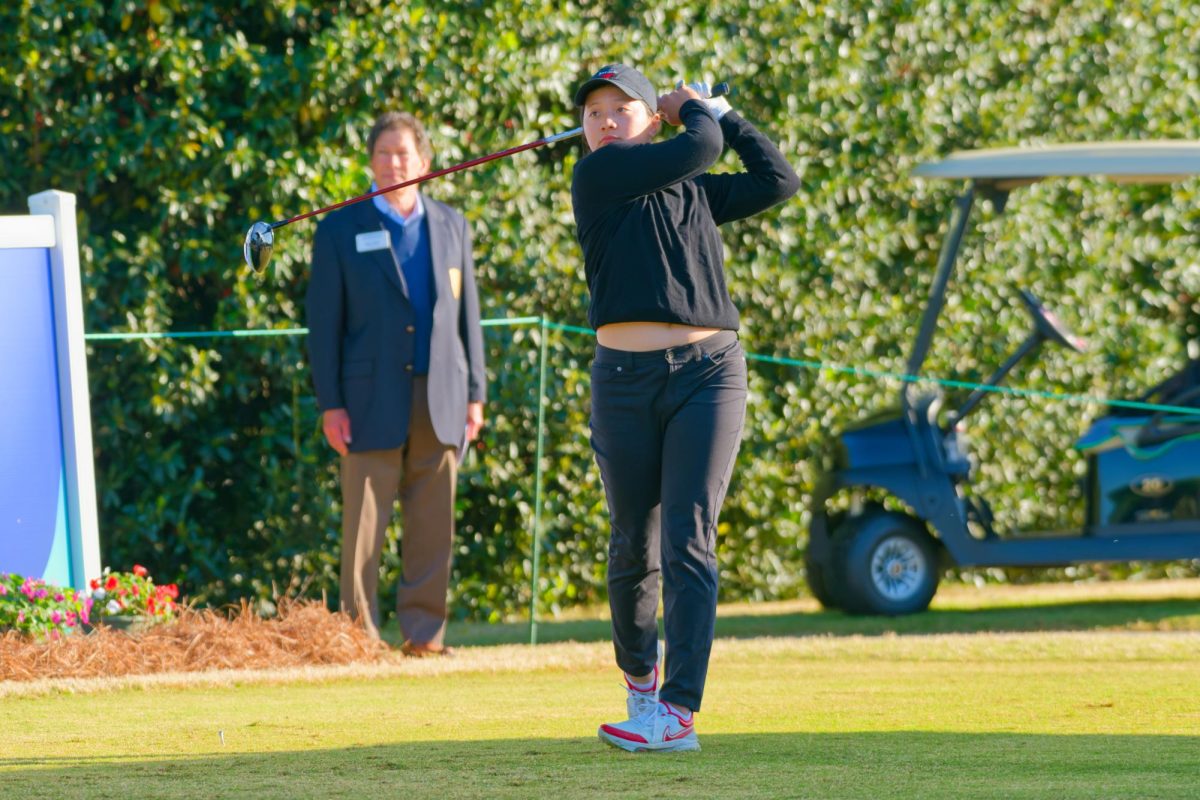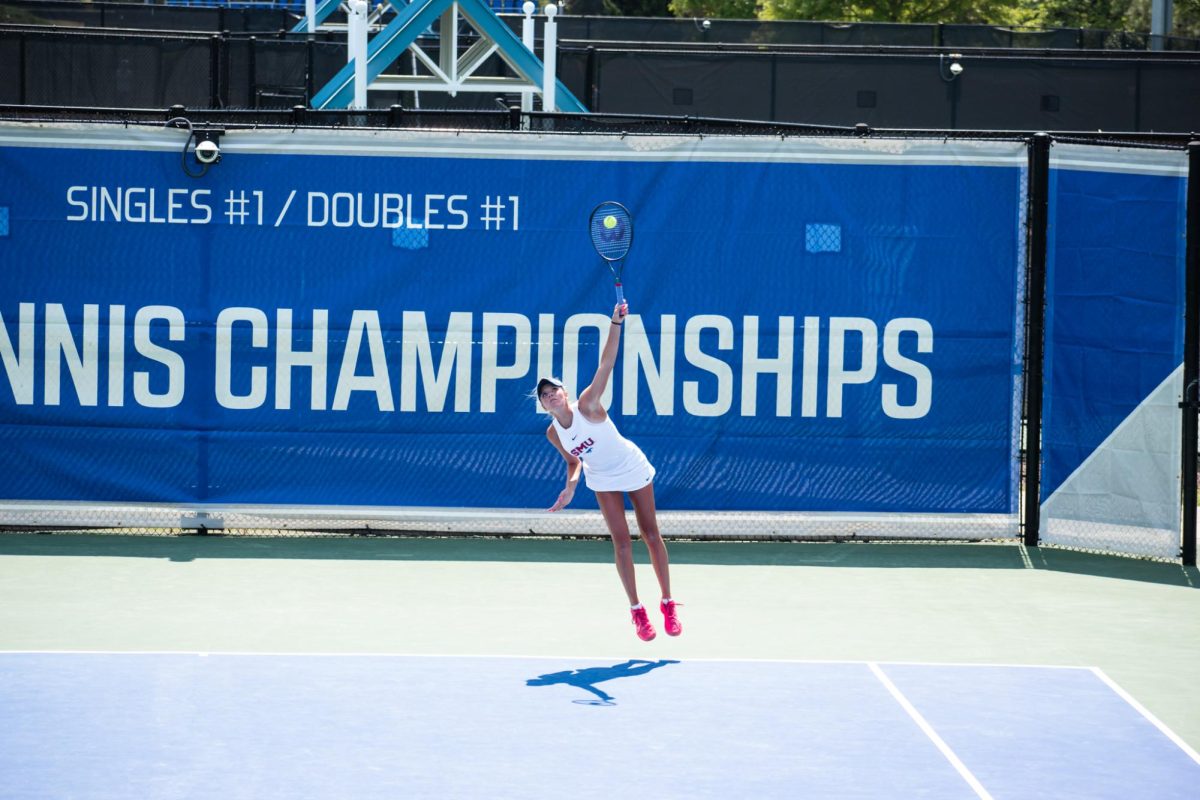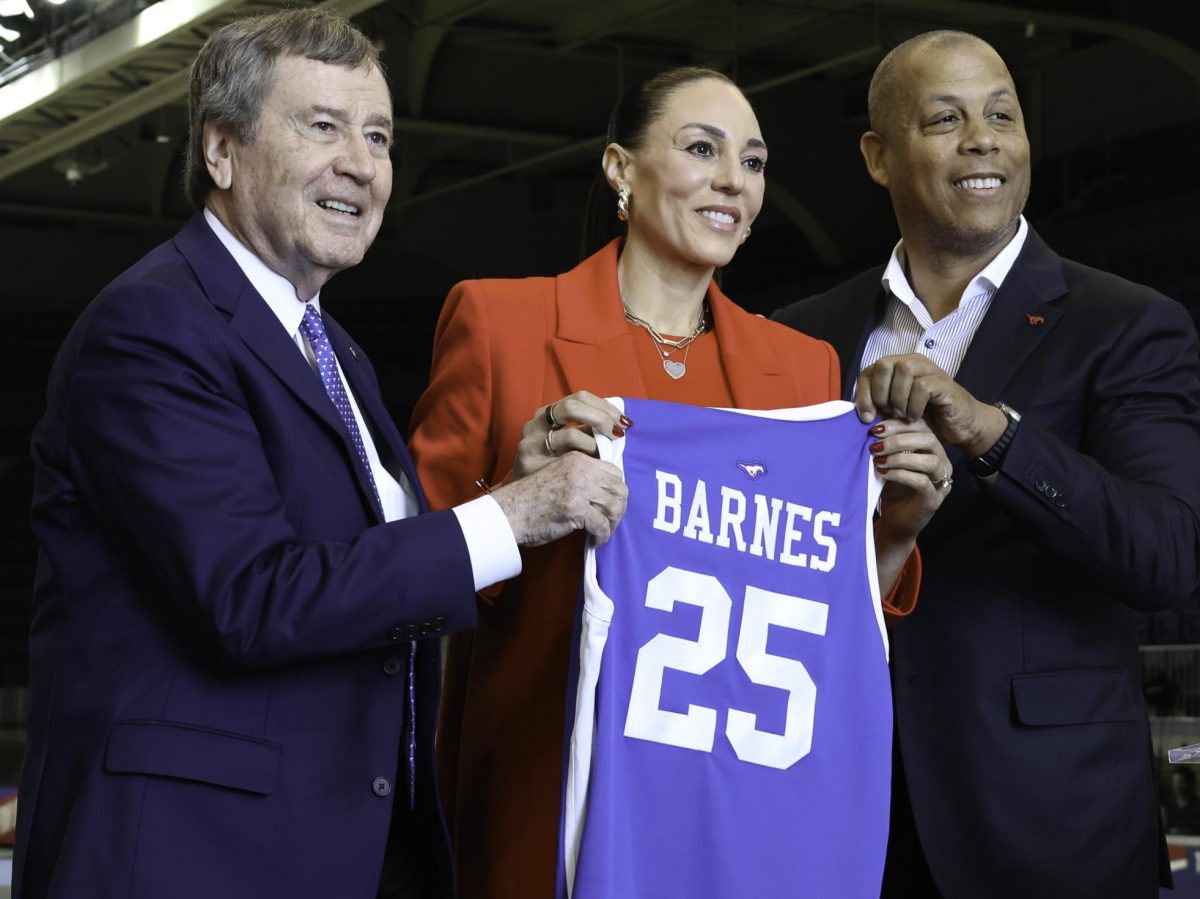December, 2018. Lake Placid, New York. The track is fully formed and the ice is out. On the last day, 17-year-old Taggert Hudson awaited his turn to practice sledding down the track. It’s long, intimidating, and high up on a mountain at approximately a mile long, where speeds can get up to 75 miles an hour. But, rookies don’t usually get the chance to start from the very top. They’re rookies. They’ll usually start half a quarter of the way up or halfway up. However, the coaches asked him: “Do you want to try from the top?”
“Yeah, I’ll give it a shot,” he said.
He had no fear. He made it all the way down – and that was a huge step for him. If the coaches believed in him enough to let him do this, he had no reason to doubt them. He didn’t question them.
Although he was exhausted, he was exhilarated too. When the coaches asked him how he felt after he went down, without hesitating, he said, “I loved it!”
Hudson’s sport of choice is not like the rest. He competes in skeleton – where an individual competitor sleds headfirst down an ice track – for the USA Team as a development athlete. It’s a sport that’s not as popular as others in the U.S. In fact, there are only three tracks in all of North America.
But how did the San Antonio native, and current SMU freshman, make it all the way to the USA Skeleton team – without ever having touched a sled before?
It all started when he watched the 2018 PyeongChang Winter Olympics. He remembers the moment Olympic medalist Chloe Kim graced his screen.
“She was 17 and she won a gold medal,” Hudson said. “And I was like ‘Dang, I’m 17. I want a gold medal. So I was like, ‘What can I do to be in the Olympics?’”
So, he did his research. Maybe he’d try curling? Or bobsledding? After a little time, he eventually landed on his ticket in: skeleton. As a former runner in track, Hudson said the explosiveness, acceleration, and precision of the sport perked his interest. And in that moment, the Olympics didn’t seem like some far away dream or fantasy.
“I just started realizing that this sport was perfect for my athletic ability,” Hudson said.
From there, all that was left was to turn his idea into a reality.
In the summer of 2018, he had just arrived for a summer seminar at the Air Force Academy in Colorado Springs. Coincidentally, tryouts to qualify for the USA Bobsled and Skeleton rookie camp were also being held there. So he paid the fee and signed up. Hudson didn’t have any experience other than what he previously researched about skeleton. All in all, he was just hoping for the best.
At the tryout – also called a combination or combine – he had to compete in a series of events, and as he went through them, his excitement began to increase.
“When I first got there, it felt like I was not supposed to be there. Then, after the sprints, I scored really well and I started to realize like ‘I really got a shot at this,’” Hudson said.
Hudson was smaller, less experienced, and the only kid there. Armed with a calculated mind, he kept statistics on himself in order to understand the scoring process and his performance overall.
“When I was going through the combine, I would sneak a look over at the scores that they were holding to see what my times were,” Hudson said. “Then, I’d pull it up on my phone and see what my time correlated to in terms of score, and then [I] was adding it up as I was going. And as I was going, I was definitely increasingly like ‘Wow, this is happening. This is crazy.’”
Hudson also didn’t look like the other athletes. In addition to his age difference, he was smaller than everyone else at a meager 150 pounds, whereas his competitors were around 180 to 200. Nevertheless, he made it through with scores well beyond the minimum requirements to qualify for rookie camp.
A couple months later, he got an email that said, “We want you to be a part of the red, white and blue.”
And just like that, he made it into rookie camp for the USA Bobsled and Skeleton Team. In that initial invitation, there were 20 men selected with him. By the end of the rookie season, there were only two left – and one of them was Hudson.
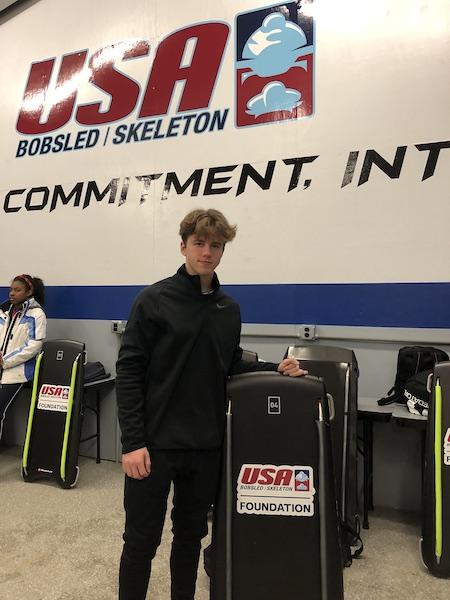
He’s been representing the 50 states ever since.
But just because Hudson found success with skeleton, it doesn’t mean he hasn’t had his share of obstacles and challenges. As a sophomore in high school, he had heart surgery because of a problem with an irregular heart rate brought on by adrenaline and dehydration, eventually diagnosed as a heart defect. Afterward, he went back into track having to monitor his lingering heart condition.
“For a time, [he] thought ‘I’m just not going to be an athlete, I won’t compete anymore,” said his mother, Sarah Hudson.
However, Hudson’s mindset wouldn’t stay that way for long. Kevin Eager, head track coach at Hudson’s high school, says that he and his wife worked with him on foundational training that would ultimately become useful as he recovered. These skills even translated into what he would need to pursue skeleton – such as learning more about explosiveness, tackling the first hurdle, and fixing flaws in how he ran. Hudson practiced diligently and got to a place where he could compete at his best.
“He likes to think through things,” Eager said. “And at the same time, he’s a really good competitor.”
Hudson credits his track coach with helping him develop and recognize the skills he needed to succeed. And now that Eager has seen him as a track athlete and onto this new journey, he notes his most memorable moment seeing Hudson’s rise, something he calls the “moment of becoming.”
“And so, we’re sort of at that moment, still right now where he’s still sort of ‘becoming’ as a skeleton guy,” Eager said. “But that’s the exciting part and that moment is always the most special for me.”
He ultimately believes that Hudson could do just about anything he sets his mind to. Sarah Hudson strongly believes the same thing. She says from watching her son on this journey and being a big part of helping him get there, she’s seen his defining qualities and strengths blossom. Namely, he’s a calculated risk taker and sticks by his convictions, especially when it comes to his goals.
“He has his boundaries and he’s not going to waver on those because he knows what he wants,” she said. “He wants to go to the Olympics.”
Sarah and her husband also made sure to discuss the practicality of Hudson’s desire for skeleton and as well as his level of commitment. Was he biting off more than he could chew? The answer was no. Hudson was committed to making this work.
It showed. Matt Antoine, Hudson’s skeleton coach, could see this drive and work ethic within him from the start. He says Hudson showed great athletic promise. Antoine, who is now a retired two-time Olympian, won the Bronze medal in skeleton at the 2014 Winter Olympics in Sochi. He also started in skeleton when he was 17. Both of those reasons are why he continues to serve as an inspiration to Hudson.
“It was really cool to me to meet somebody like that and have him take me under his wing and be my coach,” Hudson said. “We have to wear gloves and special spikes for the sport, and he gave me his equipment. That was really cool to be welcomed like that.”
Besides his goal to develop in skeleton, Antoine also knows Hudson’s other goal: to place emphasis on school and become an environmental engineer. He explained how his athletic and academic desires match up with his ability to do well in both areas.
“I think he’s very driven,” Antoine said. “You have to be willing, as they say, ‘to be a student of the sport’ and he definitely demonstrates that in the way he carries himself every day out at the track, and the fact that he’s really making the effort to make both this and school work at the same time.”
Juggling skeleton and coming to SMU hasn’t been the easiest transition for Hudson, but he doesn’t regret making the choice to pursue his education. He competes part-time in skeleton while simultaneously taking a full course load. Additionally, he’s involved in various extracurricular activities on campus, including Student Alliance Against Human Trafficking, Hilltop Scholars, the Grand Challenge Scholars Program, a social fraternity, and an engineering fraternity. He still maintains discipline by working out at school and making sure what he’s involved in doesn’t interfere with his ambitions.
This sport has already afforded him many opportunities, some of which involve traveling more, meeting people of different backgrounds, and experiencing a different level of athletes than the ones he was surrounded by in high school. For Hudson, pursuing skeleton has truly been a whirlwind because it’s not where he expected himself to be at this stage in his life.
“I was thinking I was going to run track in college. And now here I am at a school that doesn’t have a guy’s track team,” Hudson remarked. “The whole experience has been surreal. Every next step is just super exciting.”
After Hudson went down the track in Lake Placid, his coaches told him about the amazing professional athletes they come across who make the team: “They’ll quit their jobs and they’ll move to Lake Placid; They’ll go through all of this and then they’ll get to the top of that track, they go down one time, and they say, ‘I’m out,’” because it’s terrifying.”
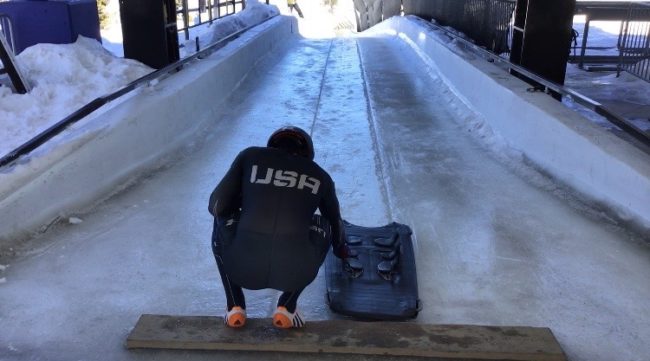
But Hudson wasn’t terrified. He was ready.
Headfirst.
Full speed.
70 miles per hour.
Nothing standing in his way.









